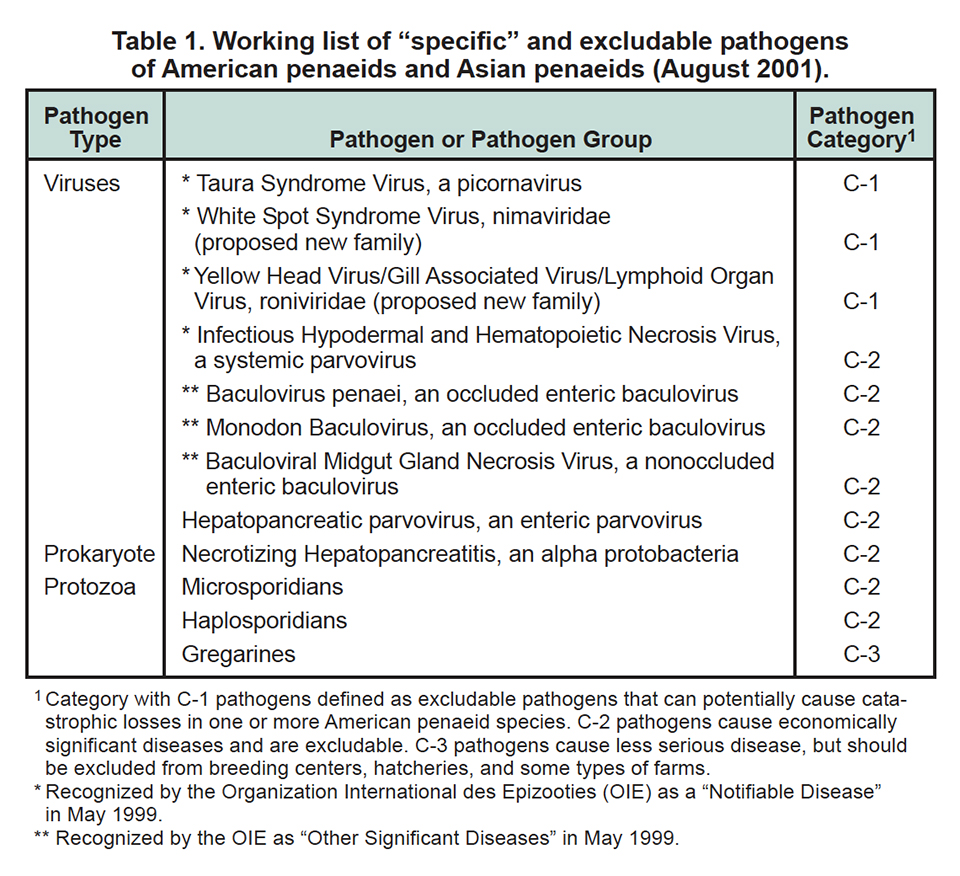Chinese, U.S. institutions collaborate

The shrimp-farming industry in the continental United States is currently based mostly on the use of Penaeus vannamei. But because of the climatic requirements of this species, the industry is limited to producing only one crop per year. The short growing season (up to six months) and very narrow spring stocking period that increases competition for seed stock are additional limiting factor
To extend the growing season, an option could be the use of a cold-tolerant species of shrimp, such as P. chinensis. In addition to its tolerance of low temperatures, the species offers other desirable characteristics, including ease of propagation in maturation facilities, higher fecundity than P. vannamei, and an attractive growth rate at lower temperature that could be significant in obtaining a second crop during the colder part of the year.
No domesticated lines
However, no domesticated lines of P. chinensis are currently available to U.S. shrimp farmers. Any such line would have to be free of excludable pathogens, as required by the United States Marine Shrimp Farming Consortium. Some of the viral pathogens on the consortium list (Table 1) have been reported in P. chinensis: White Spot Syndrome Virus (WSSV), Hepatopancreatic Parvovirus (HPV) and Infectious Hypodermal and Hematopoietic Necrosis Virus.

Development strategy
With the collaboration of the Yellow Sea Marine Fisheries Research Institute in Qingdao, China and Arizona Mariculture Associates, LLC in Dateland, Arizona, USA, the University of Arizona’s Aquaculture Pathology Group has begun an effort to develop specific-pathogen-free (SPF) stocks of P. chinensis.
The strategy involves an independent quarantine in which wild shrimp are held under strict control while they are examined for the diseases of concern. They are not released into breeding centers until an F-1 generation free of these diseases is produced (Fig. 1).

Initial stocking
During mid-April 2001, a health evaluation was performed on wild female broodstock P. chinensis captured off the coast of Qingdao, China. A total of 36 gravid female shrimp were examined by polymerase chain reaction for the presence of WSSV and HPV, two of the most prevalent diseases affecting this species in China. About 7 percent of the shrimp showed WSSV and 2 percent tested positive for HPV.
Selection
Seven spawns, which were derived from seven different shrimp, were selected from females without disease. Nauplii from these seven shrimp were transported to the United States for continuation of the primary quarantine, larval rearing and postlarvae production at the University of Arizona’s West Campus Aquaculture Center in Tucson, Arizona.
Quarantine and screening
The resultant postlarvae were kept under primary quarantine for about two months, while full disease-screening tests were performed. By the time the shrimp reached an average weight of 0.4 grams, no specific listed pathogens were detected. The shrimp were released into secondary quarantine to several collaborators in the United States.
Conclusion
The development and propagation of cold-tolerant and specific-pathogen-free penaeid shrimp stocks could expand aquaculture options in the United States by extending the growing season. A cooperative effort between institutions in China and the U.S. is now working to establish domesticated lines of Penaeus chinensis, a cold-tolerant species with additional positive production characteristics. An F1 generation of P. chinensis will be produced under secondary quarantine protocols, but before these shrimp are considered as a founder SPF population, they must be tested further.
(Editor’s Note: This article was originally published in the April 2002 print edition of the Global Aquaculture Advocate.)
Now that you've finished reading the article ...
… we hope you’ll consider supporting our mission to document the evolution of the global aquaculture industry and share our vast network of contributors’ expansive knowledge every week.
By becoming a Global Seafood Alliance member, you’re ensuring that all of the pre-competitive work we do through member benefits, resources and events can continue. Individual membership costs just $50 a year. GSA individual and corporate members receive complimentary access to a series of GOAL virtual events beginning in April. Join now.
Not a GSA member? Join us.
Authors
-
Carlos R. Pantoja, Ph.D.
Aquaculture Pathology Laboratory
University of Arizona
1117 E. Lowell Street, Building 90
Tucson, Arizona, 85721 USA -

Donald V. Lightner, Ph.D.
Aquaculture Pathology Laboratory
University of Arizona
1117 E. Lowell Street, Building 90
Tucson, Arizona, 85721 USA -
Xiaoling Song
Yellow Sea Fisheries Research Institute
Qingdao, Shandong, China -
Lee Xia
Yellow Sea Fisheries Research Institute
Qingdao, Shandong, China -
Hui Gong, Ph.D.
Arizona Mariculture Associates
Dateland, Arizona, USA -
Josh Wilkenfield
Arizona Mariculture Associates
Dateland, Arizona, USA
Tagged With
Related Posts

Health & Welfare
CSIRO research evaluates technologies to produce genetically protected, all-female shrimp
In Australia, CSIRO is investigating techniques to produce reproductively sterile, all-female shrimp populations through polyploidy, irradiation, or genetic engineering.

Health & Welfare
Challenges to commercializing shrimp triploidy
Once satisfactory performance is demonstrated in commercial larval rearing and grow-out, automated induction will finalize the triploidy commercialization.

Health & Welfare
Characterizing bacterial communities in water, gut of Pacific blue shrimp
Study provides information about the bacterial community associated with biofloc and its influence on Pacific blue shrimp intestinal microbiota.

Health & Welfare
Emerging disease: Shrimp Hemocyte Iridescent Virus (SHIV)
SHIV is a new Pacific white shrimp virus in the Iridoviridae family. Authors also developed an ISH assay and a nested PCR method for its specific detection.


